Douglas Adams, the infamous author of The Hitchhiker’s Guide to the Galaxy wrote in a less infamous book, The Long Dark Tea-Time of the Soul, “I may not have gone where I intended to go, but I think I have ended up where I needed to be.” Now that was a journey to get to, in and of itself, but we digress. Although a customer may not necessarily have your brand’s products on their mind until you tell them to, removing friction from that experience is often the key to success. This way, they end up where you want them to be…at a retailer with your brand in their cart.
The more obstacles you can remove for your customers, the better. And for some shoppers, clicking through a link to a product page detours the customer journey. They may encounter ads that drive them to another product or get frustrated that they have to repeatedly click or tap what they want to start the checkout process.
Depending on your product category and how your brand sells online, using add to cart links could create a better experience for your customers and give you a competitive advantage. With PriceSpider’s Where to Buy, you can create and use these links wherever, regardless of what ecommerce platform or retail sites you use.
Here’s how they work, why to use them, when not to use them, and how to decide if they’re right for your brand.
How does an add-to-cart link work?
An add to cart link or what we refer to as “Add to Cart Functionality,” takes your customers straight to a retail website with a specific product or bundle in their cart. Where to Buy is designed to help customers select their preferred path to purchase from any touchpoint, like an advertisement, email, your website, or other channels like Facebook, YouTube, and Pinterest. Using an add to cart link streamlines this path to purchase by enabling customers to bypass steps in the customer journey and start the checkout process.
Purchase via a retailer’s cart
Depending on the customer experience you want, the add to cart functionality can take shoppers to the cart via different paths. In specific retailer campaigns, there is a direct option that sends a customer from a touchpoint (like an ad or social post) directly to a specified retailer’s cart. For example, a brand could be running an ad for toothpaste with Target and send traffic from that ad directly to the customer’s cart on Target.com. The other option in this scenario is to send that customer from the ad to Target.com’s product detail page, which gives a shopper the option to review the details of the product and allows them to click the “add to cart” button on Target’s PDP.
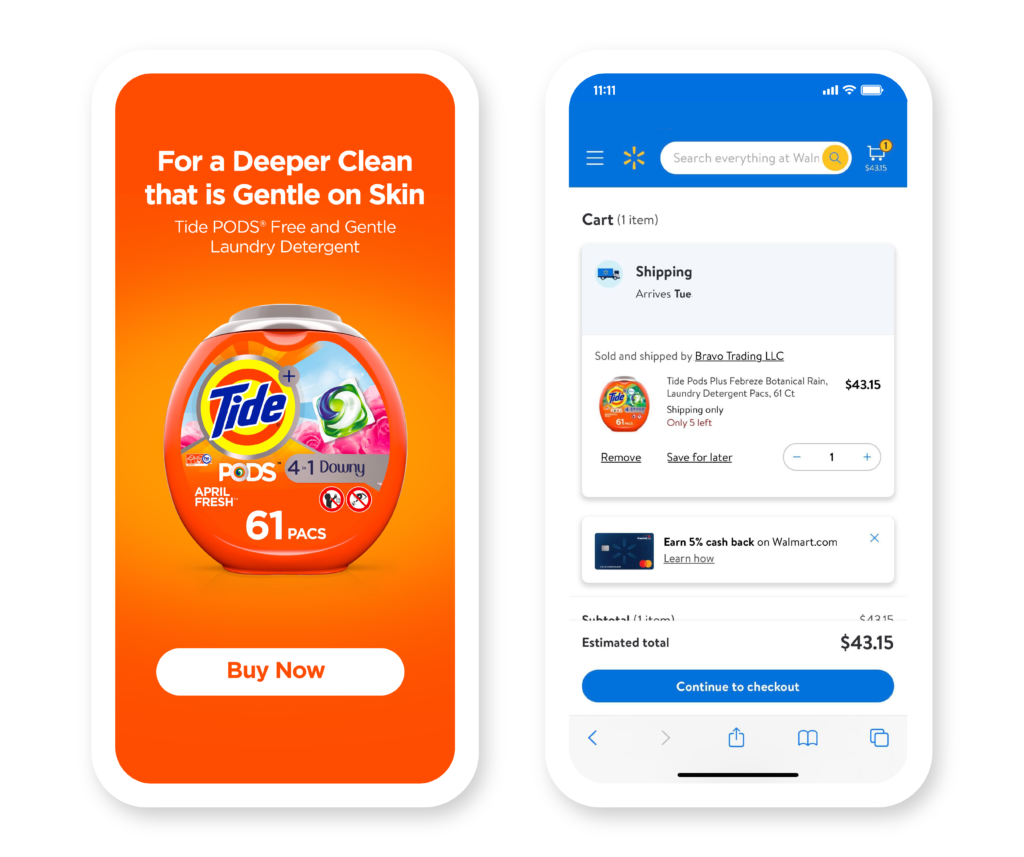
Purchase via Brand Where to Buy
Another Add to Cart option sends traffic, again from any touchpoint (ad, email, social post, etc.), directly to the brand’s dynamic Where to Buy, where the “Add to Cart” button takes them directly to the shopper’s chosen retailer cart, Target.com, Amazon.com, Walmart.com, etc. where they checkout. This is a great option for everyday consumer goods like cleaning supplies, toothpaste, laundry detergent, etc. It removes multiple clicks and gets shoppers to their cart quickly.
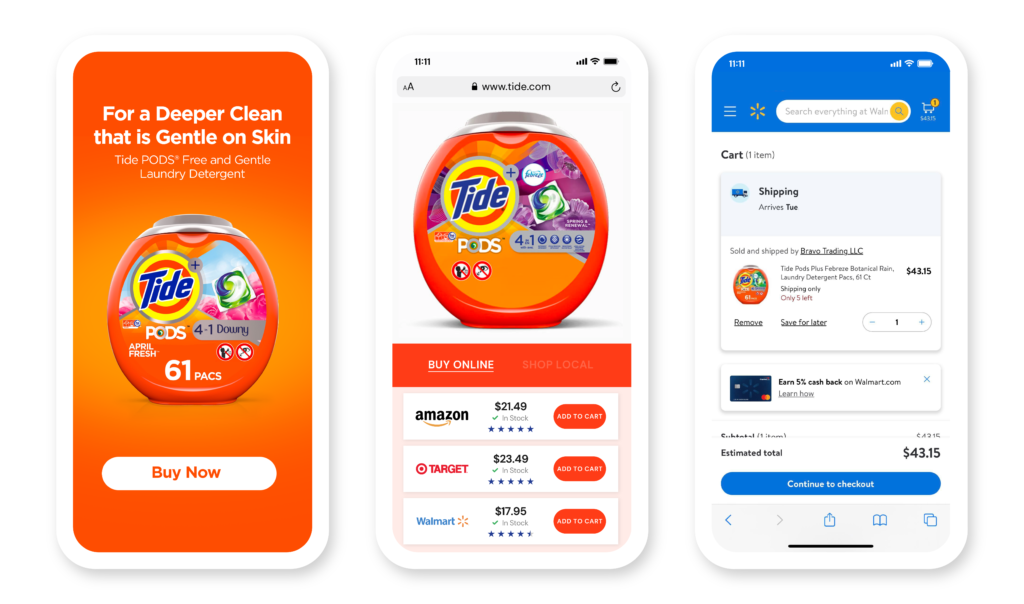
Purchase via Brand PDP
The final add-to-cart option is to send the customer that has landed on the brand’s product detail page (either through a touchpoint or organically) to the Where to Buy page and then directly to a retailer’s cart. On the Where to Buy, the shopper selects the retailer they’d like to purchase from, be it Target.com, Amazon.com, Walmart.com, etc. and once that retailer is selected, it sends the customer directly to that chosen retailer’s cart with the brand’s product in it, ready to checkout. This experience simply gives the shopper more information and product details than the previous Purchase via Brand Where to Buy option that only shows the product and purchase options.
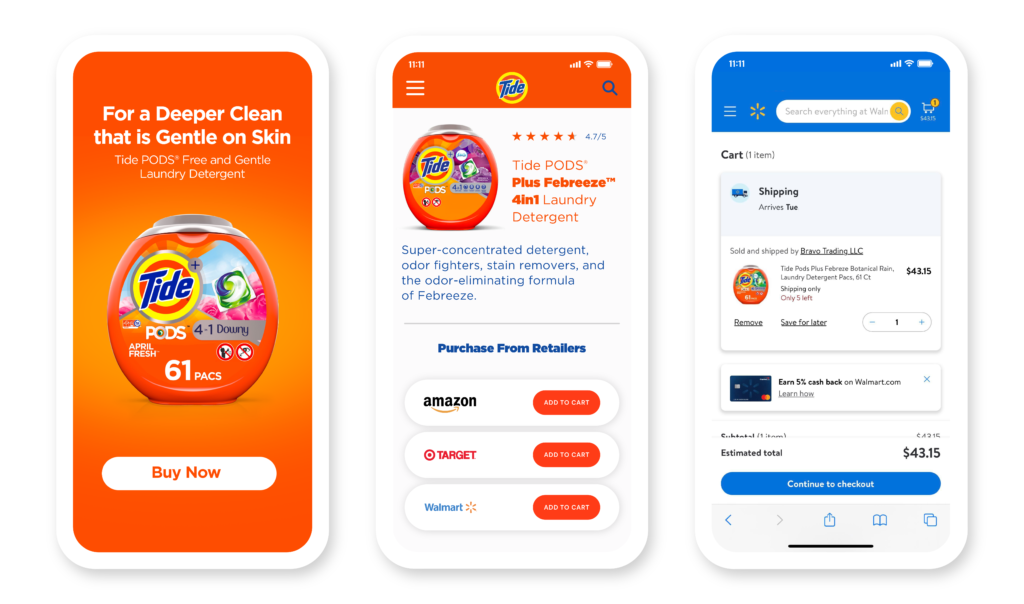
While some technology for creating add to cart links is only compatible with specific ecommerce platforms or retail sites, Where to Buy works with any platform, and our ever-growing network of more than 30,000 retailers and marketplaces lets you put these links anywhere and use them any way you want.
Why should brands use add to cart links?
There are a few situations where sending your customers straight to cart on a retail site is especially useful.
Prevent competitors from stealing your customers with ads
When you send customers to a product page on a retailer’s site, it creates an opportunity for competitors to poach sales—especially if you’re competing against one of the retailer’s private label products. While your customers browse your product page, they’ll be exposed to ads, “related products,” and comparison tables. Send them straight to cart, and you’ll be the only option they see when they arrive on the site.
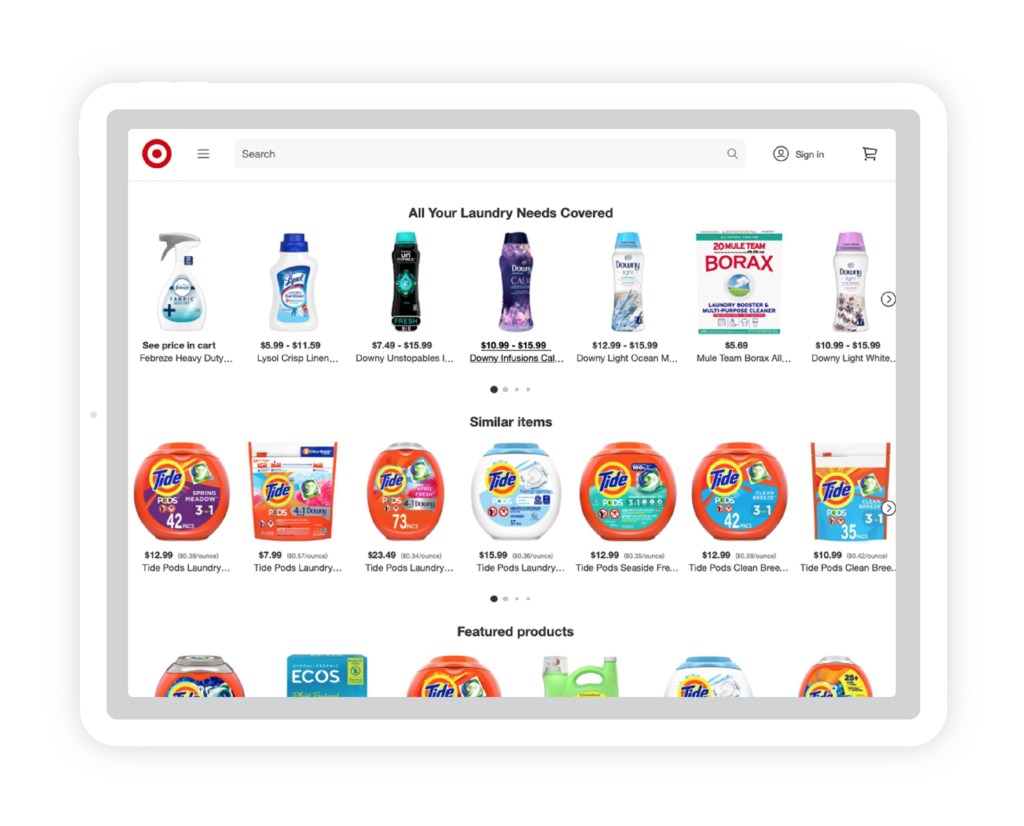
Help customers take advantage of promotions and doorbusters
If there’s limited stock available or a limited time offer, sometimes the best experience you can provide your customers is the one that lets them buy the fastest. The extra step of loading and clicking through a product page could mean missing out, plus you know they have extra motivation to go through with the purchase.
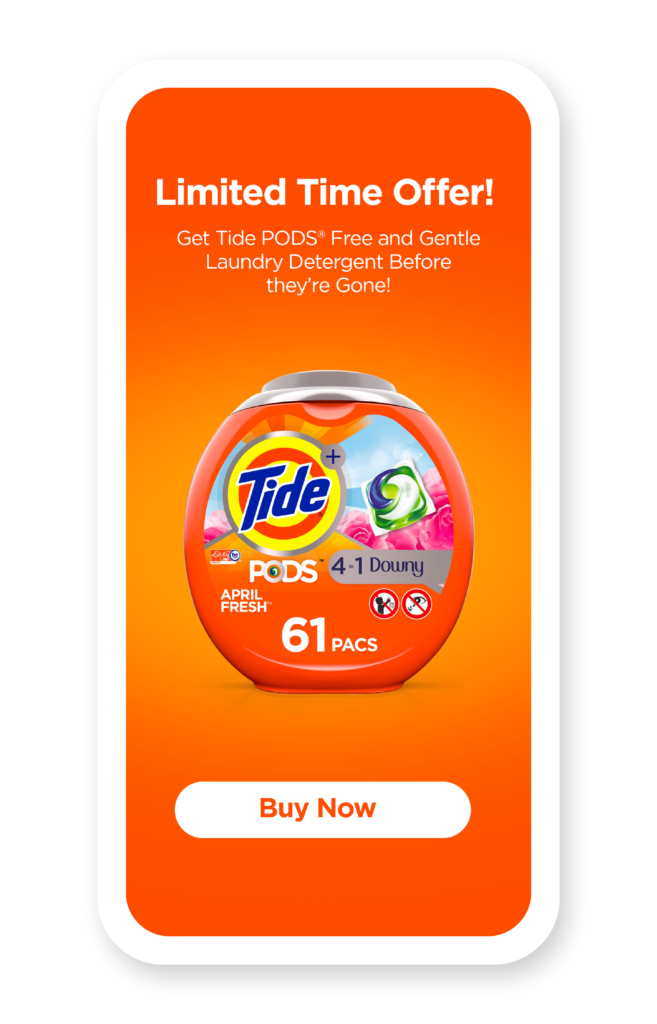
Shorten the path to purchase
The main reason most brands want add to cart links? It means fewer clicks stand between their customers and their products. The assumption is that making someone visit a product page and then click buy creates an obstacle that doesn’t need to be there. But it all depends on the context—if someone needs to see the product page before they’re confident enough to buy, cutting out this step actually creates more friction on the path to purchase since they’ll have to find another route to the right product page.
What are the drawbacks of add to cart links?
For some product categories, an add to cart link can do more harm than good for your conversions. Nobody wants to pay hundreds or thousands of dollars on a TV without having a chance to check out the specs, skim some reviews, and vet the product. And you don’t want your brand to come across as a pushy car salesperson. Similarly, if your product category tends to have a longer sales cycle, sending people straight to cart might be asking them to bypass critical research steps. In either of these situations, add to cart links can significantly increase cart abandonment rates.
Are add-to-cart links right for your business?
Thankfully, you don’t have to simply guess if this is the right move for your brand. With Where to Buy, you can test how campaigns and audiences with add to cart links perform versus links to product pages. You may find that audiences who are further along in the customer journey convert better on add to cart links, while those in the initial stages convert better when they have the opportunity to learn more about the product first. Or you may find that one of your products performs better with an add-to-cart link, and another performs better with a product page link. But you won’t know until you test, and you certainly don’t want to let assumptions drive such a key decision.
See how add-to-cart links work in Where to Buy
Where to Buy makes it easy to use add to cart links wherever you need them. Whatever ecommerce platform you’re on and whatever sites you sell through, Where to Buy enables your customers to get your products in their carts with a click.
Already have Where to Buy? Learn more about how Add to Cart works.
Not a PriceSpider customer? Talk to an expert about add to cart links.

